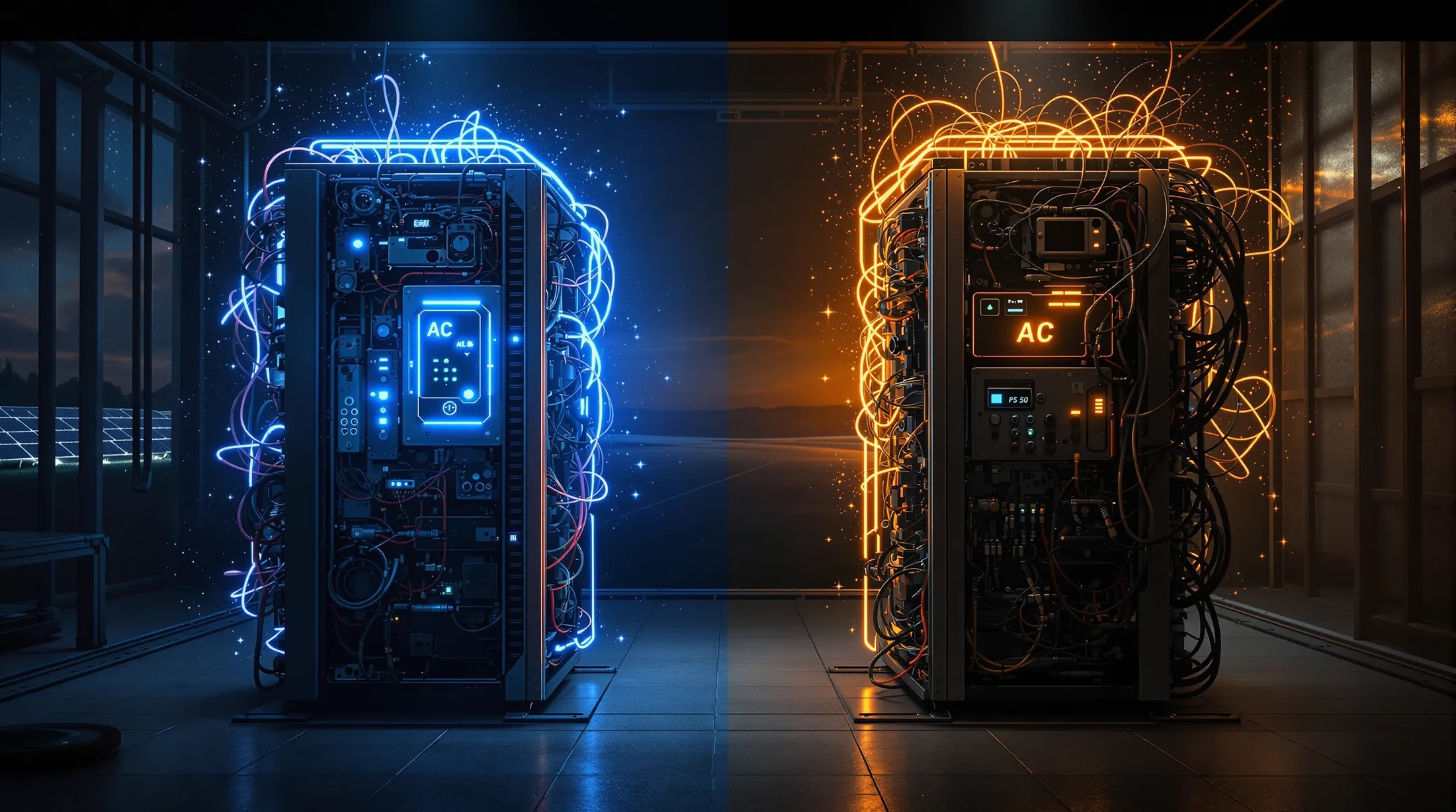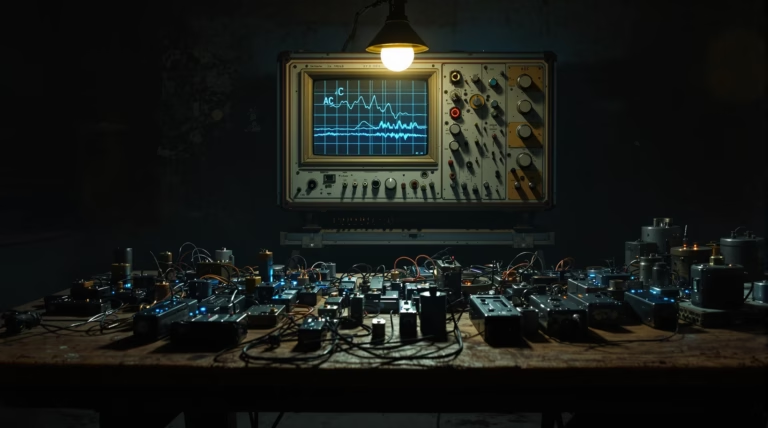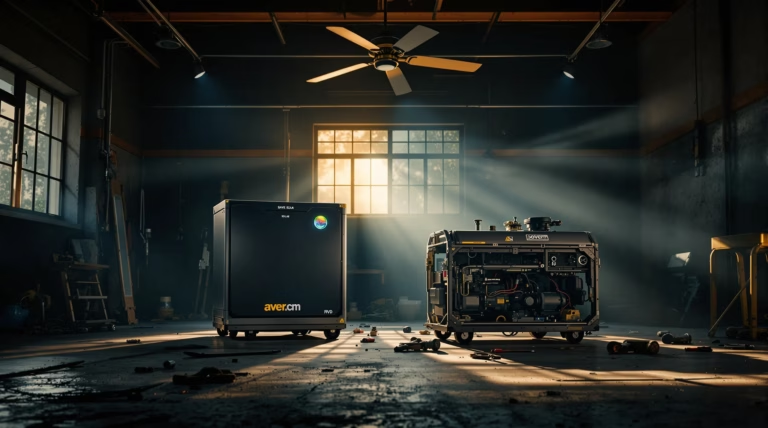DC Coupled vs AC Coupled: Key Differences Explained
Making an informed decision about your solar energy system can significantly impact its long-term performance and return on investment. Let’s explore the fundamental differences between DC coupled and AC coupled systems to help you choose the most suitable configuration for your needs.
Understanding DC Coupled and AC Coupled Systems
The distinction between DC coupled and AC coupled systems lies in their approach to managing energy flow between solar panels, batteries, and household electrical systems. These configurations affect installation complexity, efficiency, and scalability, making it essential to understand their unique characteristics before investing in solar technology.
What is DC Coupling?
DC coupling creates a direct connection between solar panels and battery storage using direct current (DC) without intermediate conversion. This configuration employs a single inverter to convert stored power to AC for household use, streamlining the energy flow process.
- Direct energy flow from panels to batteries in native DC form
- Single conversion step using one inverter
- Optimized voltage through charge controller
- Ideal for new, ground-up installations
- Maximum energy capture efficiency
What is AC Coupling?
AC coupling involves converting solar-generated DC power to AC immediately through an inverter for home use. A separate battery inverter manages energy flow between the AC circuit and battery storage, requiring additional conversion steps.
- Compatible with existing solar installations
- Multiple energy sources can connect independently
- Easier system expansion capabilities
- Requires multiple conversion steps
- Ideal for retrofit projects
Key Differences Between DC Coupled and AC Coupled Systems
Efficiency and Energy Conversion
| System Type | Conversion Steps | Efficiency Loss |
|---|---|---|
| DC Coupled | Single conversion (DC to AC) | Minimal losses |
| AC Coupled | Multiple conversions (DC-AC-DC-AC) | 2-10% cumulative losses |
Cost and Installation Considerations
The financial aspects of both systems extend beyond initial equipment costs to include installation complexity and operational expenses.
- DC Coupled Systems: – lower hardware costs for new installations but require specialized expertise
- AC Coupled Systems: – higher initial costs but more cost-effective for retrofits
- Installation Labor: – simpler for AC coupled retrofits, more complex for DC coupled systems
- Long-term Investment: – modular expansion possible with AC coupling, potentially spreading costs over time
- Maintenance Costs: – generally lower for DC coupled due to fewer components
Flexibility and System Design
System flexibility serves as a crucial differentiator between DC and AC coupled configurations. AC coupled systems demonstrate superior adaptability, enabling seamless integration of battery storage with existing solar installations without equipment replacement. This retrofit-friendly approach proves particularly valuable for homeowners looking to enhance their current solar array with energy storage capabilities. AC coupled systems also support modular expansion, allowing independent addition of multiple solar inverters or batteries while maintaining system compatibility.
Advantages and Disadvantages of DC Coupled Systems
DC coupled systems create a direct connection between solar panels and battery storage without intermediate AC conversion. This streamlined configuration influences various aspects of system performance, from efficiency to installation requirements. While these systems excel in energy efficiency and direct power management, certain limitations may affect their suitability for specific scenarios. Understanding both advantages and challenges helps determine whether a DC coupled approach aligns with particular energy needs and installation circumstances.
Benefits of DC Coupled Systems
- Superior energy efficiency with 3-8% higher conversion rates than AC coupled systems
- Enhanced energy harvesting during low-light conditions
- Ability to capture low-voltage electricity during early morning and late evening
- Simplified architecture with fewer components
- Reduced maintenance requirements
- Seamless integration for new solar installations
Limitations of DC Coupled Systems
- Complex installation process, especially for retrofits
- Higher labor costs and extended installation times
- Potential ineligibility for certain utility storage program incentives
- Challenging system design and scaling requirements
- Increased upfront costs for complete system installations
- Limited compatibility with existing solar setups
Advantages and Disadvantages of AC Coupled Systems
AC coupled systems employ a distinct configuration where solar power converts to AC before battery storage. This architecture creates specific advantages and limitations that influence overall system performance. While these systems excel in retrofit compatibility and expansion capabilities, they face efficiency challenges that may impact their suitability for certain applications. The balance between these factors determines whether an AC coupled approach matches specific energy requirements and installation scenarios.
Benefits of AC Coupled Systems
- Exceptional integration flexibility with existing solar installations
- Simplified retrofitting process without requiring original equipment replacement
- Reduced installation time and labor costs for existing setups
- Superior system expandability for growing energy needs
- Enhanced compatibility with grid-tied applications
- Access to various utility incentive programs
- Support for diverse power source integration
Limitations of AC Coupled Systems
- Reduced energy efficiency – 2-10% loss due to multiple conversion steps (DC to AC, AC to DC, DC to AC)
- Higher hardware requirements – separate solar and battery inverters increase initial costs
- Greater system complexity – multiple inverters create more potential failure points
- Lower battery charging efficiency compared to DC coupled systems
- Reduced performance in areas with limited solar resources
Choosing the Right System for Your Needs
The selection between DC-coupled and AC-coupled solar systems depends on your specific circumstances and energy goals. While DC-coupled systems deliver superior efficiency through direct energy pathways, AC-coupled configurations offer greater flexibility for existing installations and future expansions.
Your decision should weigh technical aspects against practical constraints like budget and installation complexity. New solar installations focused on maximizing energy efficiency typically benefit more from DC-coupled systems. However, AC-coupled systems present a more practical and cost-effective solution when adding battery storage to existing solar setups, despite their slightly lower efficiency.
Factors to Consider
| Factor | DC-Coupled Recommendation | AC-Coupled Recommendation |
|---|---|---|
| Existing Infrastructure | New installations | Existing solar panel systems |
| Energy Usage Pattern | Heavy reliance on stored energy | Daytime consumption dominant |
| Future Scalability | Limited expansion needs | Planned system growth |
| Installation Complexity | Higher | Lower |
Future Trends in Solar Energy Systems
The solar energy landscape is evolving rapidly with hybrid inverters that efficiently combine both coupling methods. These advanced solutions offer DC coupling efficiency alongside AC configuration flexibility, optimizing energy management based on consumption patterns and grid conditions.
- Emerging hybrid inverter technology bridging AC and DC coupling benefits
- Advanced battery technologies with higher density and smaller footprints
- Smart energy management systems optimizing real-time power flow
- Modular designs enabling incremental system expansion
- Integrated solutions combining benefits of both coupling approaches







